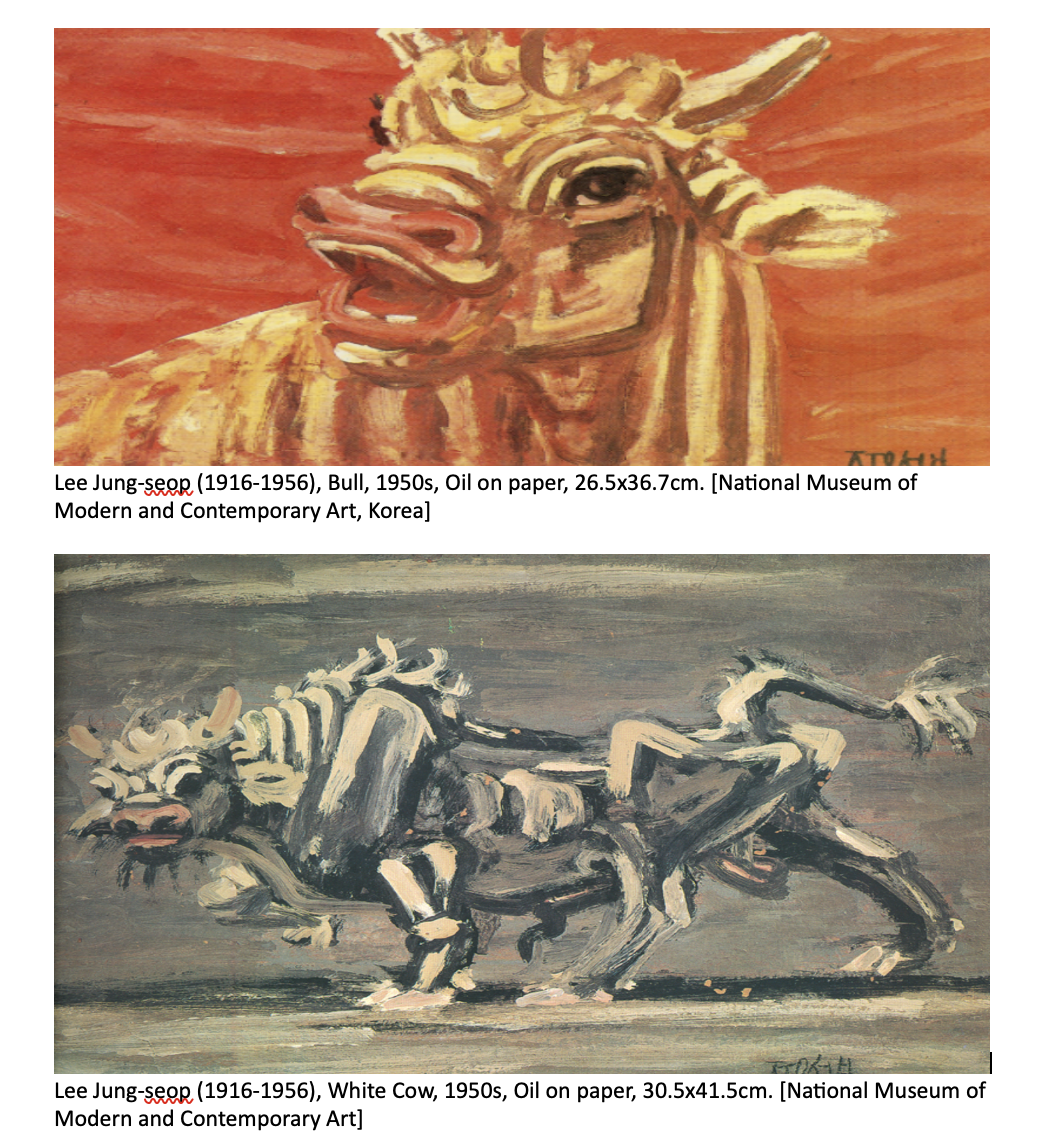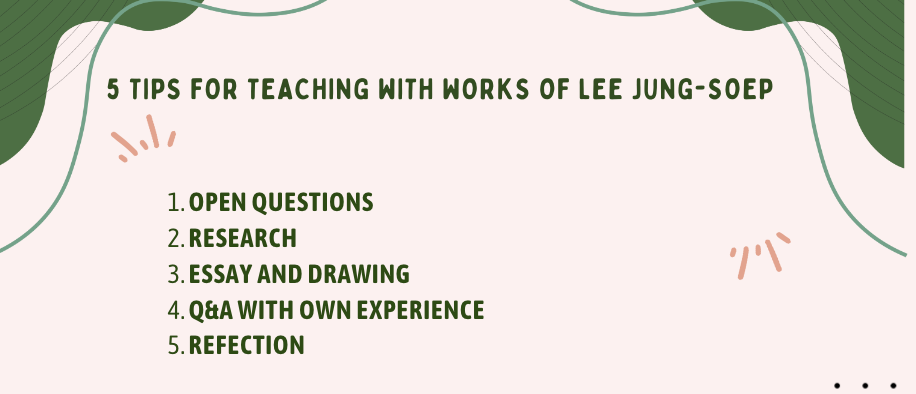Lesson Plan: Understanding Korean modern art through "Bull” and “White Cow” by Lee Jung-seop (1916-1956), Korean Artist For grade 6th – 8th (Middle school)Korean modern and contemporary art can be divided into periods: modern art from the early 20th century to the 1950s and contemporary art from the 1960s to the present. This lesson is designed to look at Korea's historical situation and Korean culture in the early to mid-20s, including the Japanese colonial period and war, through the works and life of Lee Jung-seop, a representative artist of modern art. Lee Jung-seop's works are meaningful in Korean art history because the biography of his works includes the unfortunate history of Korea's Japanese occupation and the Korean War, and the painting "Cow" he painted is a national symbol of overcoming these historical tragedies. This class was created to introduce middle school students in grades 6-8 to Lee Jung-seop's painting 'Bull' and “White ox”, which is familiar to Koreans but not yet widely known in the West. Through this class, students can understand Korean modern and contemporary art history and explore Korean sentiment and culture. In addition, through this, students will have an opportunity to examine, discuss, and think about the symbolism of the cow in Lee Jung-seop's work, his life, and what true art is. About Artist Lee Jung-seop was born in 1916 and graduated from Osan School of Korea. Since school, we have been accustomed to seeing works such as Lee Jung-seop's <Bull> and <White Cow>. Lee Jung-seop, who has loved cows since he was young, was greatly influenced by his art teacher at Osan School, who told him that Korean should paint in the Korean style. Lee Jung-seop had no choice but to live an unstable life after coming down to the south during the Korean War and was not recognized as a writer during his lifetime. He could only hold one exhibition in 1955, but eventually died of poverty and illness at 39. Essential Questions: - Have you ever heard of Lee Jung-seop? - What do you think of "cow" as a symbol of Koreans and their emotions? - How does war and tragedy affect an artist's work and life? - What does it mean to include ethnic sentiments in your work? -What do you think it means to overcome difficulties and adversity through art? -What are your own adversities and obstacles that come to mind through Lee Joong-seop's works? And in what art form can it be symbolized? How to use this lesson Through the 5-step art appreciation workflow introduced in 5 Tips for Teaching with Art (MoMA Video for Teachers), this class will teach students Lee Jung-seop's biography and Korean modern and contemporary art history through his paintings of cows. 1. Slow down and do not answer questions. Venice questions are questions that are not yes/no. It can generate energy without any prior knowledge and is essentially capable of doing it on its own. 2. Have children organize information to understand energy. 3. After this, participation monitoring of machines excluded from questioning through requests for drawing, writing, etc. 4. Then connect the work to personal experiences to increase engagement. This process activates progress and becomes a level where you can ask yourself questions and quit about art. 5. Reflect and incorporate previously acquired ideas through a final reflection period. Standards: National core art standard: Visual Arts-Presenting 1. Anchor standard 4: Select, analyze, and interpret artistic work for presentation. Enduring understanding: Artists and other presenters consider various techniques, methods, venues, and criteria when analyzing, selecting, and curating objects artifacts, and artworks for preservation and presentation. 2. Anchor standard 6: Convey meaning through the presentation of artistic work. Enduring Understanding: Objects, artifacts, and artworks collected,preserved,or presented either by artists, museums, or other venues communicate meaning and a record of social,cultural,and political experiences resulting the cultivating of appreciation and understanding. Visual Arts-Responding ⁃ Anchor standard 7: Perceive and analyze artistic work. Enduring understanding: individual aesthetic and empathetic awareness developed through engagement with art can lead to understanding and appreciation of self, others, the natural world, and constructed environments. ⁃ Anchor standard 8: Interpret and meaning in artistic work. Enduring understanding: People gain insights into meanings of artworks by engaging in the process of art criticism. Visual Arts-Connecting ⁃ Anchor standard 10: Synthesize and relate knowledge and personal experiences to make art. Enduring understanding: Through art-making, people make meaning by investigating and developing awareness of perceptions, knowledge, and experiences. ⁃ Anchor standard 11: Relate artistic ideas and works with societal,cultural,and historical context to deepen understanding. Enduring understanding: People develop ideas and understandings of society, culture, and history through their interactions with and analysis of art. Next: 1.Open questions
0 Comments
Leave a Reply. |
Myungja Anna KohArtist Categories
All
Archives
July 2024
|
Proudly powered by Weebly



 RSS Feed
RSS Feed